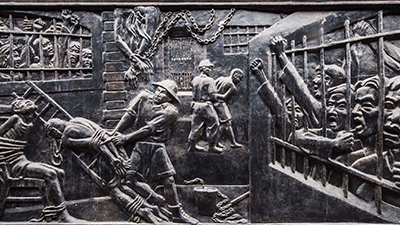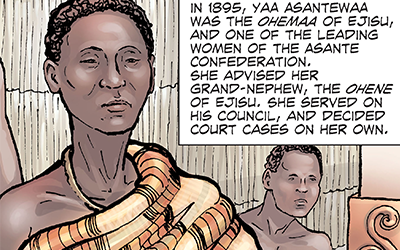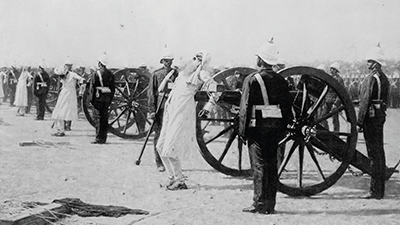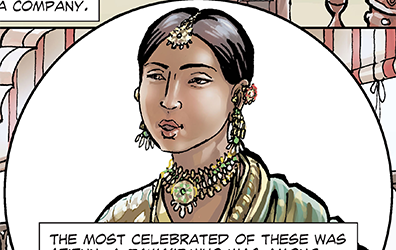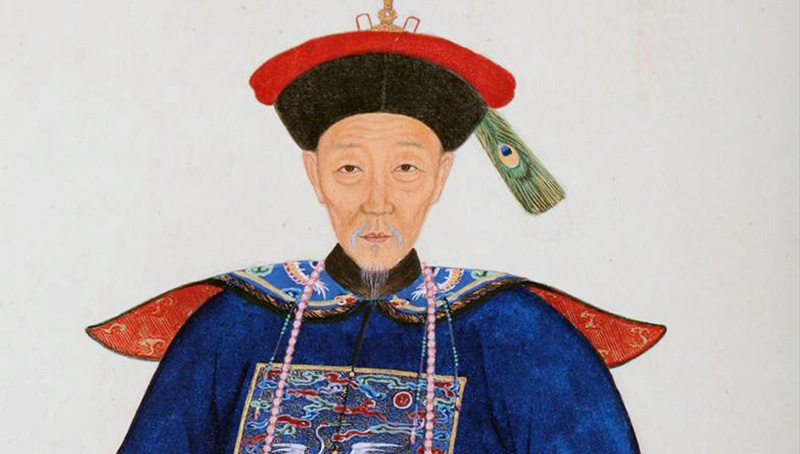Indigenous Responses to State Expansion from 1750 to 1900 CE
Driving Question: What strategies did indigenous leaders use to resist imperialism, and how successful were they?
As a new age of imperialism rose across the globe during the long nineteenth century, colonized people adopted many strategies to survive new systems of colonial control. Some cooperated with colonial authorities, exploiting new power structures to their advantage. Others pushed back, resisting with tactics old and new, sometimes quietly, sometimes through violent rebellion. Some chose less direct methods, studying, writing, and coming up with ideas to explain how colonialism affected them.
Learning Objectives:
- Explain how and why internal and external factors have influenced the process of state building from 1750 to 1900.
- Explore the varied ways in which indigenous leaders resisted imperial powers.
- Use the historical thinking practice of causation to assess the 1857 Indian uprising as a response to colonialism.
- Use the historical thinking skill of claim testing to evaluate claims about imperialism and colonialism.
Vocab Terms:
- administrator
- bureaucracy
- customs
- indigenous
- racism
- rebellion
- resistance
Opener: Indigenous Responses to State Expansion
To teach this lesson step, refer to page 3 of the Lesson 6.3 Teaching Guide.
You’re about to learn about the varied responses indigenous peoples had to colonial rule. Preview examples of these responses and group them into three categories: resilience, resistance, or revolt.
Responses to Industrial Imperialism
To teach this lesson step, refer to page 3 of the Lesson 6.3 Teaching Guide.
For reading strategies, take a look at the OER Project Reading Overview.
The responses to imperialism were as varied as the areas it touched. Explore the unique and innovative ways people resisted imperialism around the world.
-
Guiding Questions
-
Before you read
Preview the questions below, and then skim the article. Be sure to look at the section headings and any images.
While you read
Look for answers to these questions:
- How did people in Southeast Asia use corn and cassava as tools of resistance?
- What does the author argue were some of the goals of colonial subjects?
- How did some inhabitants of Hanoi use rats as tools of resistance?
- How did French education in Indochina backfire?
- How and why did some aristocrats in the Dutch East Indies try to accommodate Dutch rule?
- Why was stealing a curtain an act of resistance by Raden Mas Adipati?
- What were some strategies that people in the Southeast Asian highlands used to avoid taxation and labor?
After you read
Respond to the following questions:
- Using evidence from this article, explain how environmental and cultural factors aided indigenous resistance to colonial rule from 1750 to 1900.
- The author of this article lists many types of actions and activities as acts of resistance. Do you agree that these were all acts of resistance? What does resistance mean to you?
- Think about the people in this article in terms of cultural developments and interactions. What were their goals? Were they trying to build new communities? Maintain old ones? Resist imperial states? Or do something different?
Experiencing Colonialism: Through a Ghanaian Lens
To teach this lesson step, refer to page 5 of the Lesson 6.3 Teaching Guide.
Formal colonialism first came to the region we today call Ghana in 1874, and British rule spread through the region into the early twentieth century. Explore how local people resisted in many different ways, reclaiming their ability to make their own decisions and shape their own lives and societies.
-
Guiding Questions
-
Before you watch
Preview the questions below, and then review the transcript.
While you watch
Look for answers to these questions:
- When was the region that is today Ghana conquered by the British?
- According to Ato Quayson, what was the purpose of the Customs House, and how did it help the British to make money?
- How did some Ghanaians employed at the Customs House fight back?
- According to Jennifer Hart, what type of transportation did the British want to put in Ghana to control the export of cocoa, and how did Ghanaian farmers seek to control trade themselves?
- According to Jennifer Hart, how did the informal system of trotros (minibus/taxis carrying people around Accra) come into being? What did the British call these trotros, and why?
- What do the plaques on the walls of Holy Trinity Church tell us, according to Ato Quayson?
After you watch
Respond to the following questions:
- Using evidence from this video, explain how various social and cultural factors impacted the development of the global economy from 1750 to 1900.
- In this unit, you are encountering all kinds of evidence about how imperialism was powerful, controlling, and invasive. Does this video support or challenge that narrative?
- How do the ways that Ghanaians resisted colonialism compare to the resistance you read about in the article about the 1857 revolt in India?
Key Ideas
Graphic Biography: Yaa Asantewaa, Queen Mother of Ejisu
To teach this lesson step, refer to page 6 of the Lesson 6.3 Teaching Guide.
Have student use the Three-Step Reading for Graphic Biographies tool to guide their approach to reading in this genre.
Can a Queen lead resistance to colonialism? If that Queen is Yaa Asantewaa, the Queen Mother of Ejisu in Asante, the answer is yes!
-
Guiding Questions
-
Before you read
Preview the questions below, and then skim the comic, paying attention to things like prominent colors, shapes, and types of text and fonts. How do you know where to start and in which direction to read? What’s in the gutters (the space between panels)? Who or what is the focus of the comic?
While you read
Look for answers to these questions:
- What kind of a state was Asante, and who was Yaa Asantewaa?
- What was the role of the Queen Mother, or Ohemaa?
- What happened in 1895 and how did it affect Yaa Asantewaa?
- What happened in 1900, and how did Yaa Asantewaa respond?
- How does the artist represent Yaa Asantewaa’s leadership through art in this biography?
After you read
Respond to the following questions:
- To what extent does this article explain how cultural and social factors influenced state building and resistance from 1750 to 1900?
- How does this biography of Yaa Asantewaa support, extend, or challenge what you have learned about reactions and resistance to colonial rule in this period?
Causation: Indian Uprising
To teach this lesson step, refer to page 7 of the Lesson 6.3 Teaching Guide.
Use the Causation Feedback Form to pinpoint students’ progress and next steps in mastering causation.
What is the tipping point for an uprising to occur? You will analyze the causes of the 1857 Indian uprising to find out.
The 1857 Indian Uprising
To teach this lesson step, refer to page 11 of the Lesson 6.3 Teaching Guide.
In 1857, many Indians, especially soldiers technically employed by the East India Company (EIC), rose up in rebellion. Historians debate why this uprising happened at this time. Was it a result of dissatisfaction with military rules and leadership? Religion? Deindustrialization? What do you think?
-
Guiding Questions
-
Before you read
Preview the questions below, and then skim the article. Be sure to look at the section headings and any images.
While you read
Look for answers to these questions:
- Who ruled much of India in 1857?
- What was the doctrine of lapse?
- Where did most of the East India Company’s soldiers come from? How did the EIC treat them?
- What was the “spark that lit the fire” for the 1857 uprising?
- What, according to the author, were some of the other explanations for the uprising?
- What was the outcome of the uprising?
After you read
Respond to the following questions:
- How did colonialism and colonial resistance reshape communities and impact the process of state-building from 1750 to 1900?
- Why does it matter whether historians call the 1857 uprising a “mutiny,” a “revolt,” or a “war of independence”? Why do titles matter?
- Compare the 1857 uprising to strategies you read about in earlier articles. Consider: what conditions led to South Asians’ military resistance in 1857? Why was this not always an available strategy for colonized people to manage or resist colonialism? Why was it the strategy they chose in this time and place?
Graphic Biography: Azizun of Lucknow
To teach this lesson step, refer to page 12 of the Lesson 6.3 Teaching Guide.
Sometimes, one has to break out of the box to break the cycle. The story of Azizun shows us how defying expectations of behavior can lead to revolutionary change.
-
Guiding Questions
-
Before you read
Preview the questions below, and then skim the comic, paying attention to things like prominent colors, shapes, and types of text and fonts. How do you know where to start and in which direction to read? What’s in the gutters (the space between panels)? Who or what is the focus of the comic?
While you read
Look for answers to these questions:
- Where did Azizun live, and what was its status in 1856?
- What was a Tawa’if? What did the British believe they were?
- How did Azizun react to the occupation of Awadh in 1856 and the rebellion that broke out in 1857?
- How does the artist use the image in the last panel to demonstrate that Azizun was breaking the rules, both of Awadh and British ideas about how women should act?
After you read
Respond to the following questions:
- To what extent does this article explain how and why internal and external factors have influenced the process of state building from 1750 to 1900?
- How does this biography of Azizun support, extend, or challenge what you have learned about the “civilizing mission” claimed by imperialists and about resistance to colonial rule in this period?
Source Collection: Indigenous Responses to State Expansion
To teach this lesson step, refer to page 13 of the Lesson 6.3 Teaching Guide.
Check out the Sourcing Activities Placemat to identify opportunities for deeper work with this skill.
As you read the primary source excerpts in this collection, use the accompanying Quick-Sourcing Tool and activity to guide your analysis of indigenous responses.
Closer: Indigenous Responses to State Expansion
To teach this lesson step, refer to page 14 of the Lesson 6.3 Teaching Guide.
For a refresher on Claim Testing, check out this one pager.
You can agree or disagree, but you’ve got to support the claim. That’s the name of the game in this claim testing exercise.



